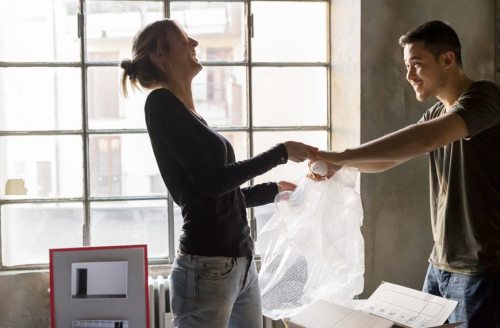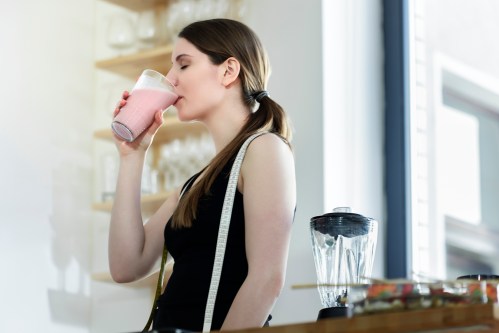Our editors independently select these products. Making a purchase through our links may earn Well+Good a commission
Yesterday, the Internet got hyped about a bubble wrap case that’s basically designed to make the back of your iPhone even more addicting than the actual screen. Akin to watching hours upon hours of beauty ASMR, feeling a plastic bubble pop beneath your fingertip is just so strangely satisfying—but why? To find out, I asked a few experts to burst the, er, bubble of mystery around this particular phenomena.
“Popping bubble wrap is about pressure and release, very similar to a build-up of stress and then immediate relief from it,’ says Tampa therapist Stephanie Sarkis, PhD, EdS. “Whenever we have a release from pressure, real or simulated, our brain receives a boost of ‘feel-good’ chemicals—dopamine and norepinephrine.” She adds that since puncturing the plastic spheres requires focus and repetition, it also lulls your brain into a meditative state.
“Popping bubble wrap is about pressure and release, very similar to a build-up of stress and then immediate relief from it,” — Stephanie Sarkis, PhD, EdS
While the delightfulness of this post-package receiving pastime has yet to be widely studied (for reasons I, for one, cannot understand), Nick Hobson, PhD, a research psychologist at PsychologyCompass, says some research does exist. “A study from the 90s found that people who had the opportunity to pop bubble wrap were more calm and focused afterwards compared to those who didn’t. The explanation is that little finger and hand movements is a natural anxiolytic [anxiety reducer] that brings about a sense of personal orderliness,” he tells me. (Remember when fidget-spinners were about as ubiquitous avocado toast? Yeah, it’s the same idea.)
Now that Sealed Air Corp, the company that’s been responsible for producing the packing material since the 1960s, has replaced the old-school product with non-poppable “iBubble Wrap” (oh, the irony), you’ll likely see it in your Amazon boxes less and less. But don’t fret—companies everywhere are making moves to fulfill the sizable whole left in the fiddling market. Apart from phone cases, bubble-lined key chains, calendars, and… costumes are all ensuring you’ll never, ever be pop-deprived.
Speaking of screen-time, here’s what technology does to your skin, and how to stop “appsturbating” at night.
Sign Up for Our Daily Newsletter
Get all the latest in wellness, trends, food, fitness, beauty, and more delivered right to your inbox.
Got it, you've been added to our email list.











